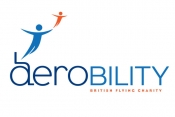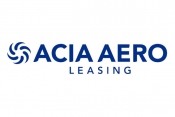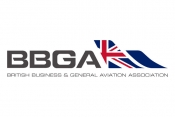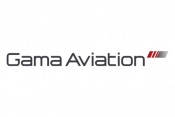Urban Air Mobility ‘must incorporate the needs of disabled citizens’
Wednesday 20th January 2021
London, 20 January 2021:
Regulators, local authorities and industry groups will need to incorporate the views and priorities of disabled groups in their early planning phase if the promise - and full market value - of advanced air mobility (AAM) and urban air mobility (UAM) systems are to be fully realised, according to a white paper published today by Aerobility and CIVATAglobal
“From the outset, UAM/AAM services must be planned with the needs of those who stand to benefit most from its introduction in mind – disabled communities,” said Mike Miller-Smith, CEO of UK-based disabled flying charity, Aerobility.
“People will be able to fly from origin to destination in ways which seem only appropriate to science fiction. Once beyond prototype stage, autonomous air vehicle design will need to develop in ways that enable their use by visually impaired passengers and those requiring wheel-chair access for example, just as has been done and is required on many other urban transport networks. Much to the detriment of those living with disability, we have learnt the hard and expensive way, that this will be much more difficult to achieve if not incorporated early.”
“In December 2020, 14 European cities delivered a manifesto to the European Union calling on local authorities to play a key role in the development of UAM initiatives in Europe,” said Andrew Charlton, Director General of CIVATAglobal.“Our two organisations are now also calling for UAM plans to include representatives of disability groups at the earliest possible stage in the process; we want to get best-practice in accessibility built into the early development and DNA of the industry, so that those with most to gain are not left behind.”
Fast facts
The drone and urban air taxi revolution has arrived
The COVID-19 pandemic has fast-forwarded the era of drone-based deliveries, providing communities in lockdown with vital medical supplies
https://www.bbc.co.uk/news/
The drone market will be worth up to $43 billion by 2025 https://www.heliguy.com/
The first flight of an electric air taxi in a European city took place in 2019
In January China’s EHang launched the world’s first passenger-carrying autonomous electric air taxi sight-seeing flights https://www.youtube.
By 2040, UAM vehicles could be carrying more than 400 million passengers a year
https://assets.kpmg/content/
By 2050 there will be up to 160,000 commercial air taxis operating https://www.
If this new transport era is to be fully realised it can only be done on the basis of inclusivity, to ensure the needs of disabled citizens are fully taken into account from the start.
According to the White Paper these are key areas which need to be addressed, urgently. First is ensuring developers of UAM ground infrastructure and platforms fully take into account the needs of disabled passengers – and the non-travelling public - in considering issues of access and egress, Second, aviation safety regulators must take account of the needs of people with reduced mobility in their regulations. Third, in smart city programmes where autonomous vehicles are being planned (air and ground), it is vital that disabled community groups are incorporated into the earliest planning. Before eVTOLs are flying in our cities they will have to be given not just an aviation safety regulator’s certificate to fly but a licence from the communities they will be serving. Fourth, a repository of “best practices” from around the world needs to be launched so developers can understand not just the basic principles but the detailed engineering solutions.
The White Paper is attached.


Electric air taxi operations are expected to start in China in 2021 and in Europe in 2025 (copyright: Shutterstock)
About Aerobility
Aerobility is a leading disabled flying charity based at Blackbushe Airport, Hampshire, UK. It offers anyone, with any disability, the opportunity to learn to fly and to participate in aviation-based activities. It does this to drive focus on capabilities and encourages the individual to ask themselves ‘If I can fly an aeroplane, what else can I do?’. This has the potential to improve the quality of life, providing opportunities for personal development which are often lacking for disabled people including the wounded, injured and sick veteran community. Aerobility represents the needs of disabled people whatever their aviation needs and aspirations. It also recognises the profound and transformational effect that the Advanced Air Mobility sector will have on the lives of those living with disability. We are therefore pleased and proud to be representing the interests of the disabled community herein.
About CIVATA global
The Civic Air Transport Association is the global trade association of the advanced air mobility (AAM) sector, bringing together cities and industries in a single global community. CIVATA is a forum to share experiences, plans, access information resources and work together on enabling the successful introduction of safe, profitable, environmentally responsible urban air mobility (UAM) operations, from small unmanned air system (SUAS) missions to urban air taxi networks and inter-city services.
For more information please contact:
Marcus O’Shea, Head of Fundraising, Marketing & Communications at Aerobility
And Philip Butterworth-Hayes , Director of Communications and Strategy at CIVATAglobal










Get Social
Twitter Linked in Facebook Instagram